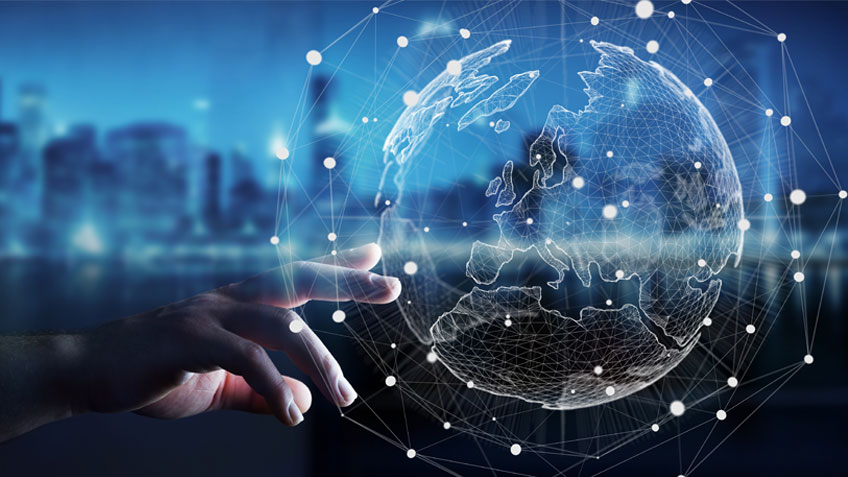How will these prominent two developments in information technology and their interplay change socio-economical world? Maybe to start this discussion, there is need to define what Artificial Intelligence and Big Data actually is. Artificial Intelligence or often just abbreviated as AI, comes in two forms. Most people when thinking about AI, have the movie “Transcendence” starring Johnny Depp in their mind. The film shows an unsupervised system. That is a system that does neither need labels nor any classification to learn. As such it learns in a very similar fashion than we humans do. One could imagine how complex it is to make a computer duplicate the workings of a human brain, considering that we do not even know our own abstract thinking process. Instead, there has been made more progress in the area of supervised learning systems. One could think of voice and image recognition where a computer learns by going through thousands of “right and wrong” scenarios (Brynjolfsson & Mcaffe, 2017).
So now that we have broadly defined what artificial intelligence is, let us talk about Big Data. According to Gartner’s definition Big Data is defined as follows: “Big data is data that contains greater variety arriving in increasing volumes and with ever-higher velocity “(oracle.com, 2019). This definition brings us to the often cited “three V’s”: Volume, Velocity, and Variety. The amount of data, the speed in which we receive data, as well as the types and variant of data we can collect, has grown exorbitantly over the last decades. Developments such as the Internet of Things, or the internet itself which tracks billions of interactions, are just two contributors to this trend of piling data.
It becomes clear, that analyzing these enormous data sets can be very valuable for various actors such as companies, Governments, and even individuals. However, one also needs to recognize the challenge on how to deal with these data sets both effectively and efficiently. One of the solutions to this is using AI. MIT Sloan Management Review puts it nicely by rating this interplay as the “(…) single most important development that is shaping the future of how firms drive business value from their data and analytics capabilities” (Bean, 2017).
So, what can this power couple do? Let us look at some examples together:
Tempus, is an AI developer in in the Healthtech industry. Their AI, uses large data sets of medical records, to assist doctors to diagnose and provide suggestions for individualized treatment. Moreover, it heavily engages in cancer research, an area many hope for faster progress.
Nutonomy, on the other hand is an AI developer within the automotive industry. Their AI technology consolidates various disciplines such as “mapping, perception, motion planning, control and decision making” to enable safe autonomous driving (Schroer, 2019).
Lastly, Blue River Tech, a company that works within the agriculture industry. They employ an AI that can distinguish between plants and then only applies herbicides to weeds. This incentive, reduces the risk of herbicide- resistant weeds and at the same time “reduces 90% of the chemicals currently sprayed” (Schroer, 2019).
These are just a few examples, but there are many more. Coming back to the question of how AI and Big data influence the socioeconomical world. AI is fed by large amounts of data on which it learns. It becomes so effective that most of the times it is more accurate in detecting and analyzing than us humans. For example, in diagnosing child diseases, some AI actually outperformed many doctors in that they were not only faster but more often correct than their human counter parts (Whyte, 2019). Moreover, AI make the future of autonomous transportation not only possible, but also safer (Wiggers, 2029). Lastly, the example of an AI just like the one by Blue River Tech, opens new ways for us to reduce the negative impact we have on our environment. And who knows, maybe AI will also safe the world from us humans one day.
Sources:
https://hbr.org/cover-story/2017/07/the-business-of-artificial-intelligence
https://www.oracle.com/big-data/guide/what-is-big-data.html
https://sloanreview.mit.edu/article/how-big-data-is-empowering-ai-and-machine-learning-at-scale/
https://builtin.com/artificial-intelligence/ai-companies-roundup
https://www.newscientist.com/article/2193361-ai-can-diagnose-childhood-illnesses-better-than-some-doctors/


I wonder especially in the healthcare industry how these developments are going to play out. In an article by Hsu (2019) it is stated that the public and policy makers are still in doubt whether AI will benefit everyone equally. On a first site it should make healthcare more accessible and free up many doctor’s hours. Nonetheless, problems such as privacy and biases in big data can reduce that accessability. Socio-economical speaking AI could also therefore widen gaps within societies. Would it then not be safer to use AI only in administrative and simple tasks, to exclude minor errors? Or would this not prevent the problem, or is the problem not completely fixable at all? I wonder what your viewpoint is on this discussion, since you talked about the impact on the socio-economical world.
https://www.smithsonianmag.com/innovation/will-artificial-intelligence-improve-health-care-for-everyone-180972758/